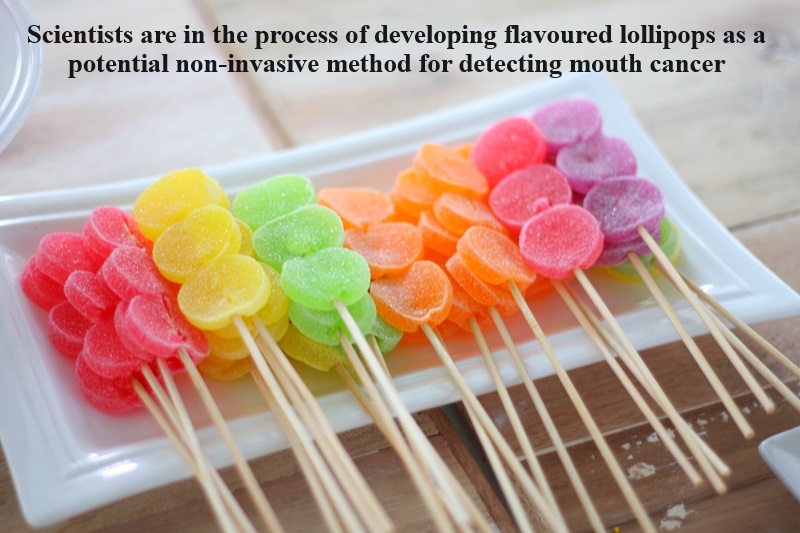
Scientists are currently in the process of developing flavoured lollipops as a potential non-invasive means to detect mouth cancer, aiming to circumvent the current invasive and often uncomfortable diagnostic procedures involving the insertion of a camera through the nose or mouth to collect tissue samples for biopsy.
These conventional methods, while effective, can be time-consuming, painful, and require specialized skills. In contrast, the proposed lollipop-based approach offers a gentler and quicker alternative, as reported by the Independent.
How would this function?
The lollipops would be crafted from a material known as smart hydrogel, originating from the University of Birmingham. The mechanism behind these lollipops would entail patients sucking on them to transfer saliva samples into the hydrogel. The hydrogel acts as a sort of molecular net, capturing both saliva and proteins that could potentially serve as biomarkers for cancer. Later, these trapped proteins can be released in the lab for analysis by cutting open the hydrogel.
Dr. Ruchi Gupta, an associate professor of biosensors at the University of Birmingham, expressed optimism about the project’s prospects to the Independent.
“Smart hydrogels have really exciting potential for diagnosing mouth cancer. They can be easily molded into shapes as a solid to ‘catch’ proteins in saliva. We’re really excited to start the next phase of this project,” she said.
The project has secured financial backing amounting to £350,000 ($441,035) from Cancer Research UK and the Engineering and Physical Sciences Research Council. Currently, the research team is engaging in focus groups to ascertain suitable flavors for the lollipops.
Dr. Iain Foulkes, executive director of research and innovation at Cancer Research UK, also acknowledged the discomfort associated with current diagnostic techniques and anticipated the transformative impact of this innovative approach.
“Biopsies and nasoendoscopy are the gold standard for diagnosing mouth cancer, but it requires great skill to carry out and can feel unpleasant for patients,” he said.
By providing a less intrusive and potentially more enjoyable method for detecting mouth cancer, this initiative represents a significant step toward improving both diagnostic accuracy and patient experience in cancer care.

Post Your Comments